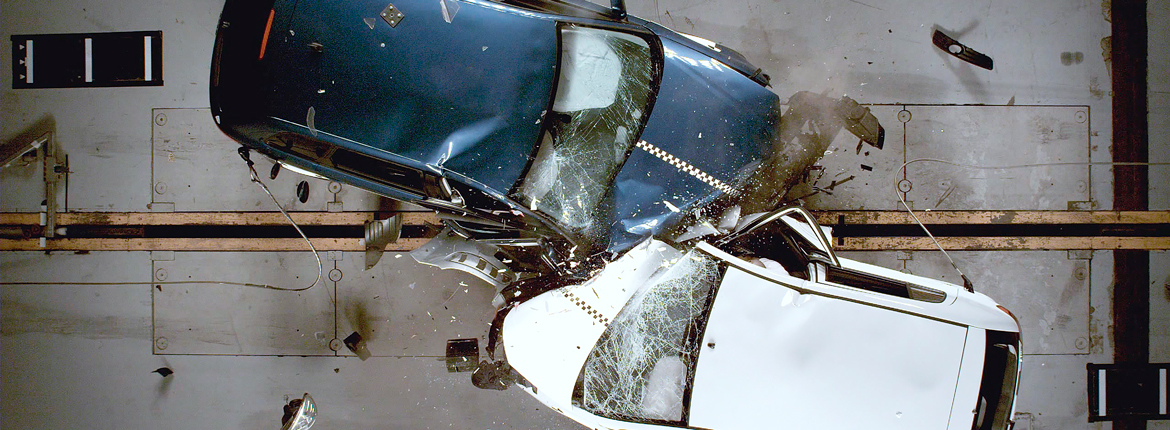
Stars on cars
A new safety campaign illustrates that safer vehicles don’t need to be expensive.
No one wants to be involved in a car crash, but if you were, would you rather be in a car that had a 77% likelihood of death or serious injury, or in one with a 12% chance? Of course you would choose the latter, and despite what many people think, that safer car needn’t be expensive or brand new.
That’s one of the messages in the new Waka Kotahi New Zealand Transport Agency (NZTA) safety campaign. The NZTA arranged to have two similar used cars crash tested at a laboratory in Sydney that normally undertakes single-vehicle crash tests for the Australasian New Car Assessment Programme. This time the lab tested two older cars of a similar age (around 10-12 years), similar size (hatchbacks), that could be purchased for a similar price ($5,000 or less).
While having those things in common, one key detail separated them: one car had a 5-star safety rating, the other had a 1-star rating.
Research shows that people are twice as likely to die or be seriously injured in a 1- or 2-star rated car, than they are in a 5-star rated vehicle. NZTA’s campaign graphically illustrates that difference and shows how two outwardly similar cars can have very different crash outcomes.
AA’s General Manager Motoring Affairs Mike Noon says the message from the test is clear: “Buy the safest car you can afford. Not all cars are equal when it comes to crashworthiness but, regardless of age or budget, there will likely be a safer option.”
This is important because two thirds of fatal and serious injury crashes involve 1- and 2-star vehicles, even though they only make up about 41% of the fleet. Making matters worse, people under 25 are more likely to be in a crash than older drivers and they are also more likely to be driving less-safe cars; three quarters of deaths and serious injuries for young people occur in 1- and 2-star cars.
While young people can’t usually afford to buy a new car, NZTA Senior Manager Road Safety Fabian Marsh says this test shows that: “when it comes to vehicle safety, better protection doesn’t have to cost more. There are lots of safe, less expensive cars to choose from.”
The Government’s new Road to Zero road safety strategy has a goal of reducing deaths and serious injuries by 40% by 2030. Modelling suggests that a quarter of this target could be achieved by improving the safety performance of the fleet.
The crash test, which involved the two cars colliding head on at 64km/h, was not pretty for either car. But while the occupants of the 5-star car would, in real life, have walked away with minor injuries, it would be a very different outcome for the occupants in the 1-star car, even though it was fitted with front and side curtain airbags. Sensors in the car's dummies estimated the risk of serious injury or death to the driver in the 1-star car was 77%, compared to just 12% in the 5-star car.
Monash University Accident Research Centre Associate Director Stuart Newstead, who reviewed the crash test, says a major problem with the 1-star car was the structural failure of the occupant space, pushing the dashboard back and crushing the driver's legs.
“In the real world this would very likely lead to a serious injury or death, particularly if the major arteries in the legs were compromised. The driver would also have suffered a serious neck injury, due to the steering wheel airbag moving out of position.
“If safety systems like airbags are bolted in, they need to be in the right place and deploying at the right time for the car to perform well.
This shows that structural integrity is a key aspect of vehicle safety. It’s not enough to say that just because a vehicle has an airbag it will be safe. A car is designed as a holistic system of interacting parts, and they all need to work together properly to make sure the occupants are protected,” Stuart says.
He believes the 5-star car performed well because the manufacturer did a better job of its holistic safety design, including structure and supporting systems like seatbelts and airbags.
Know how
There are three ways a car’s safety rating, or crashworthiness, is assessed. The Australasian New Car Assessment Programme (ANCAP), assesses popular cars up to six years' of age. For cars older than six years, Used Car Safety Ratings (UCSR) apply, based on the results of actual road crashes involving those models in both Australia and New Zealand. If there's not enough crash information about a specific make and model, then an averaged Vehicle Safety Risk Rating is applied. Over 95% of cars in New Zealand have a safety rating that people can look up.
Stuart Newstead of Monash University Accident Research Centre explains the difference between ANCAP and UCSR is that UCSR reflects how a vehicle performs in a crash in the real-world.
“It’s a bit like developing a vaccine in the lab, which has all the traits that you want based on the theory, and then you put it out there in the real world and see how it performs; it may or may not perform as you expect,” Stuart says.
The reason UCSR are used after six years is because that’s how long it takes to collect enough data from real-world crashes. For a car model to be given a UCSR, it has to have been involved in at least 500 real-world crashes.
Search for safety ratings by vehicle model or number plate at Rightcar.
Reported by Mark Stockdale for our AA Directions Spring 2020 issue
